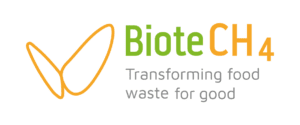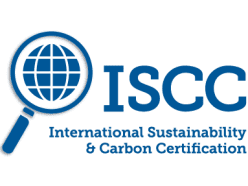Dairy Waste Management: Transforming Dairy Waste into a Reusable Resource
- Commercial
- -
Dairy waste management looks into mitigating the impact of the waste generated by the milk industry. This article explains why it’s important.
According to the Waste and Resources Action Programme (WRAP), the UK loses around 330,000 tonnes of milk each year. In monetary terms, that is more than £150 million.
In addition to the financial loss, milk waste also impacts the environment, both as one of the biggest producers of greenhouse gases) as well as a hazard to aquatic life.
That is why dairy waste management is essential. And, as with all waste products, it helps to think of ways to reuse milk waste before it is discarded. But, can dairy waste be transformed into a reusable resource?
The quick answer is yes, with more and more ways of recycling dairy waste being proposed. But, first, why do we need to manage dairy waste?
How is dairy waste harmful to the environment?
Milk is extremely polluting, especially if it goes into water bodies. That is because it is high in phosphorous and other nutrients. These nutrients provide a favourable environment for algae and aquatic plants.
Whilst this might seem like a good thing, balance is essential in nature. Excessive plant growth in water bodies leads to less light and air available to the animals, effectively suffocating them.
That, in turn, allows the plant life to grow unchecked, exacerbating the problem further.
Also, since it is an animal by-product (ABP), milk carries the risk of transmitting infection if it came from a sick animal.
That is why, while dairies are permitted to dispose of dairy waste any way they see fit within the premises, they can’t pour milk down the drain. Not only does the drain lead the waste out of the premises, but it also eventually leads to a water body.
Where is dairy waste management needed most?
Dairy waste management is required at every step of the dairy supply chain, from the dairy farms, through the logistics and supply chain, to the retailers and, eventually, the consumers.
Surprisingly, the biggest culprit for dairy waste generation is consumers. According to WRAP, homes generate nearly 90% of the total milk waste in the country – around 290,000 tonnes.
Retailers and transportation are the next biggest ‘wasters’ of milk, wasting around 30,000 tonnes in leaks and breakages.
Finally, processing generates around 13,000 tonnes of dairy waste.
How is dairy waste generated?
As we mentioned earlier, dairy waste is generated at every step of the journey, starting from the farm and ending in the consumer’s refrigerator. Here are some of the reasons why milk and dairy products need to be discarded as waste.
Dairy waste in farms
Milk waste in dairy farms is generated either due to infection, contamination, or processing and bulk storage issues.
Dairy cows, like all animals, are susceptible to inflammation, diseases, and injuries. A common form of infection caused by bacteria is bovine mastitis. That can result in milk that is unfit for consumption due to the presence of antibiotics, which are used to treat the condition.
Since milk for human consumption cannot have traces of antibiotics over a certain limit, any milk that shows higher amounts cannot be sold for human consumption. This ‘antibiotic milk’ is usually disposed of in the on-farm slurry store.
Similarly, if the animal is sick with an infection that could potentially be passed on to people, then its milk cannot be sold.
If there is any evidence of, or even a suspicion of, contaminated milk getting mixed with ‘clean’ milk, it has to be disposed of.
Finally, bulk tank losses also contribute to dairy waste on farms. That can be due to human error (pipework not connected when transfer begins, accidental mixing of clean and infected milk).
It may be due to mechanical failures, such as a power cut, which causes an increase in the storage temperature, or the tank being unable to uplift due to cold weather conditions.
Loss during processing is also common. For example, the cream is separated from milk using a milk separator. However, if this piece of equipment is not maintained properly and is not functioning optimally, it can lead to wastage in the form of ‘separator desludge’.
Dairy waste during transportation and at retailers
Leaks and breakages of containers can be the biggest cause of dairy waste during transportation and at retailers. This could happen because the containers were loaded improperly in the roll cage, causing them to fall when it was moved.
Another reason might be that the delivery area surface was not clear or smooth, leading to products tipping over. Staff handling is also one of the factors where people handling the containers dropped them accidentally.
Finally, dairy waste could also be a result of the breaking of the chill chain. Dairy products need to be kept under a certain temperature. If it goes up for an extended period of time, milk will go sour. This, then, becomes waste.
Dairy waste in homes
One of the biggest reasons for milk being wasted in homes is that it has gone off. That might be because it has actually gone sour, or the homeowner is going by the use-by date.
Other reasons also include serving too much (or serving milk to someone who doesn’t drink it) or accidents that cause spills.
How can dairy waste be reduced?
It might be difficult to eliminate dairy wastage completely, but it can be greatly reduced. However, that requires certain changes to be made in how milk is handled and stored.
And, since the cause of dairy waste is different at each stage, the methods to combat waste also need to be suitably tailored.
Reducing dairy waste in farms
Since one of the causes of dairy waste in farms is due to sick animals, early intervention might play a big role in reducing milk loss.
Standardised operating procedures and putting checks in place can help reduce human error, which could reduce waste.
Finally, regular maintenance would ensure that machines and equipment are working efficiently.
However, most milk waste in dairy farms, except antibiotic milk, is used up as animal feed, which helps reduce the amount that actually needs to be managed.
Reducing dairy waste during transportation and at the retailers
Since spilt milk is the leading cause of dairy waste in these stages, one of the proposed solutions offered by WRAP is reviewing the bottle design and material.
They also suggest optimising roll cage designs as well as providing other solutions like shrink-wrap, stretch-wrap, elastic cord, or plastic trays to hold milk bottles in place.
Reducing dairy waste in homes
As we mentioned earlier, spoilage is the leading cause of dairy waste in homes. However, that can mean milk actually going bad or people assuming it has gone off because of the ‘use-by’ date on the packaging.
To combat this, Morrisons decided to remove the ‘use-by’ date on their own milk bottles. Instead, they provide a ‘best-before’ date but encourage consumers to use the sniff test to determine for themselves if the milk is good to consume.
Similarly, the Co-op is introducing the ‘Freeze me’ label on their milk bottles to encourage people to freeze the milk they aren’t using immediately.
WRAP, in its campaign, ‘Love Food, Hate Waste’, has revealed that most households don’t know what temperature their refrigerator is set at, and, as a result, are not storing milk and milk products in a cold enough environment.
By setting your refrigerator to a temperature below 5°C, you will be able to store dairy products safely for longer.
WRAP is also proposing temperature-sensitive labels (which change colour if the temperature is not cold enough) and labels that remind you to keep your fridges cold enough.
There is also a recommendation for white goods manufacturers to develop products with optimised milk storage conditions.
How can dairy waste be recycled?
The thing is, even with every precaution, some amount of dairy waste might be inevitable. In dairy farms, some of this wasted milk is often used as animal feed or is spread on the land. However, waste generated during processing or further down the chain, including in homes, milk waste needs to be handled and disposed of responsibly.
We mentioned earlier that dairy products in landfills tend to release more greenhouse gases than most other food waste. Since landfills are bad for the environment even without dairy waste, we need other ways to deal with it.
Converting dairy waste into bioplastics
Whey is a by-product of cheese production. It is the leftover liquid that used to be thrown away. Now, whey protein has become a popular source of protein supplements for the health and sports industry. That is because whey protein is easily absorbed and promotes muscle growth.
However, when extracting whey protein and milk solids, you get whey permeate as a by-product. Whey permeate is the liquid left when the solids and protein have been removed from the milk.
In Europe, researchers have developed a biotechnological process that uses whey permeate to make polylactic acid. This is a bio-plastic that can be used in packaging and fabrics.
Transforming dairy waste into phosphate-rich fertiliser
Phosphorous is a nutrient that plants need to grow healthy. In fact, farmers use phosphate-based fertilisers for their crops. However, that is extracted from phosphate rocks, which are obviously a limited resource.
However, if you remember, we discussed earlier how milk is rich in phosphates, which is what makes it so bad for water bodies.
That is why Dr JJ Leahy, at the University of Limerick in Ireland, is leading a project called REFLOW. The project is designed to use this phosphorous-rich resource and sustainably extract phosphates from it to fertilise crops.
This is an excellent way to ‘close the loop’ where the products of the soil go to feed the cows that produce milk, which is then used to feed the soil.
Anaerobically digesting dairy waste to create
Dairy waste can also be anaerobically digested to produce sustainable biofuel as well as a nutritious biofertiliser. We have discussed the Anaerobic Digestion (AD) process in an older post, but the gist of it is that organic waste is ‘fed’ to bacteria.
These microorganisms consume and digest the waste to release methane, carbon dioxide, and some other gases. This gas mix is cleaned up and used as fuel.
The remaining ‘digestate’ is a highly-nutritious fertiliser that is rich in nitrogen, essential for plants’ foliage growth. When dairy waste is added to the initial feedstock, the resultant digestate is also rich in phosphates.
For a business, recycling your dairy waste helps reduce the number of greenhouse gases it would release when dumped in landfills. And, it is also cheaper than sending it to a landfill.
The only caveat is that dairy products are Category 3 ABPs, which are strictly regulated. As a result, not everyone can process all dairy waste. However, at BioteCH4, we are not only compliant but also qualified and experienced to handle your dairy waste.
If you have dairy waste that you would like us to recycle, get in touch with us. We will help dispose of it in an ecologically-responsible way.



